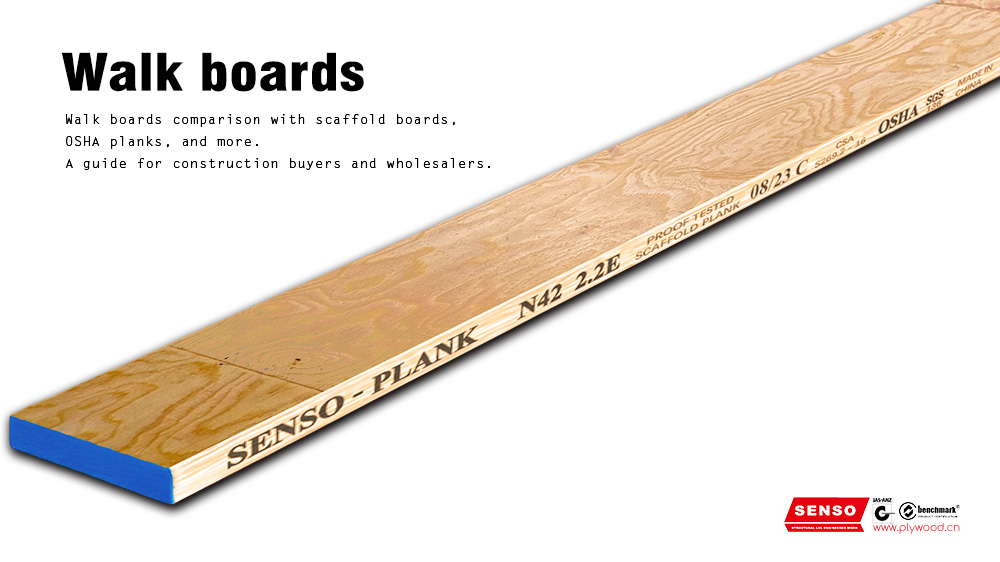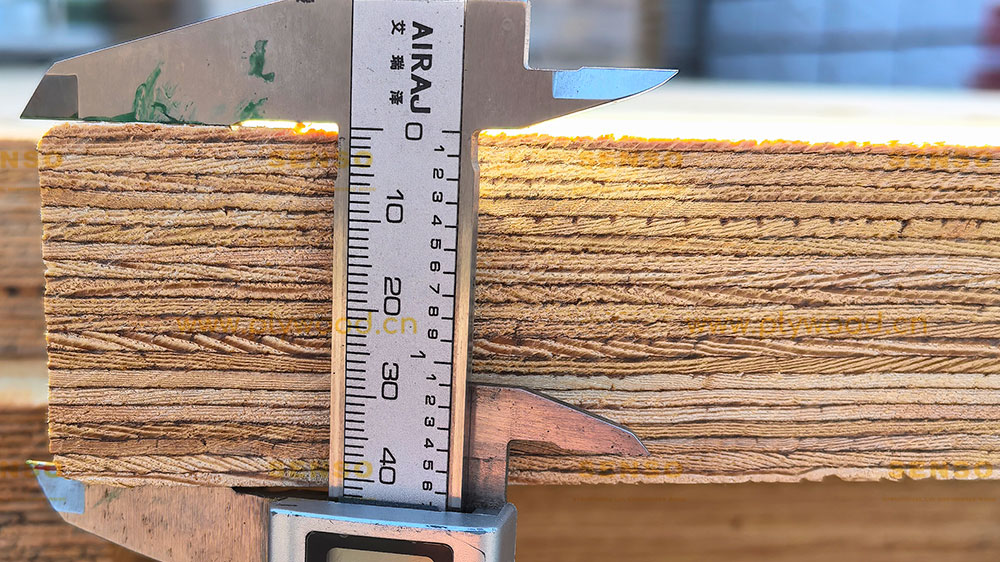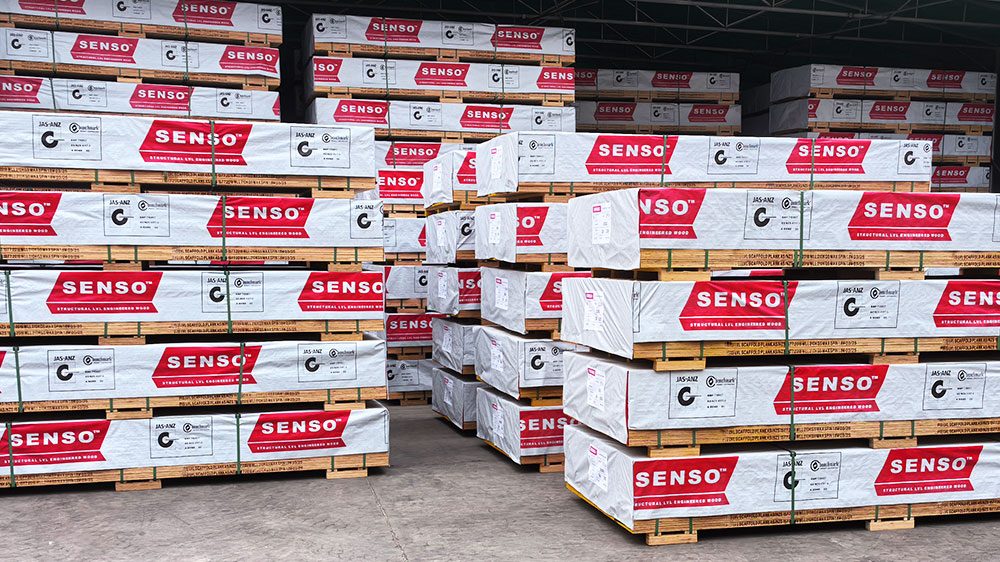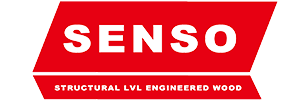What Are Walk Boards?
Walk boards are temporary platforms placed between scaffold structures or supports. Workers stand or move on them while working at height. These boards create a flat, stable area to walk, stand, or place tools. Walk boards are available in various forms, including wood, aluminum, and composite materials. Many include slip-resistant surfaces or built-in safety hooks. Some are designed for specific load ratings and weather conditions. Unlike standard scaffold planks, walk board offer greater comfort, a wider platform, and often meet higher safety standards. They are used in construction, building maintenance, and even warehouse operations.

Walk Boards vs Scaffolding Plank
Both are used for working at height, but the design and use of scaffold board and scaffolding planks differ.
Walk board provide a wide, flat, and often reinforced walking surface. They are engineered for strength and stability. Aluminum walk board, in particular, reduce weight while improving portability. Some walk board have integrated side locks or anti-slip textures.
Scaffolding planks are generally wood-based and simpler in structure. They may lack built-in anti-slip features or edge protection.
Comparison Points:
- Walk board support higher loads.
- Scaffolding planks are typically more affordable.
- Walk board last longer in harsh environments.
Scaffolding planks are suitable for temporary or lower-budget projects. Walk board perform better on busy, high-traffic sites.
✅ Walk Boards vs Scaffold Board
These two terms are often used interchangeably, but they aren’t the same.
Scaffold boards are commonly made from pine, fir, or laminated timber. In some regions, scaffold boards must meet specifications such as BS 2482 or OSHA.
Walk boards are more versatile in design. They often have a steel or aluminum frame and a durable deck.
Key Differences:
- Scaffold boards tend to be timber-based and straightforward.
- Walk board come in different materials and often offer better grip.
- Walk board typically handle more wear and tear.
Walk boards are preferable in high-repetition or multi-shift sites. Scaffold boards are acceptable for small projects or temporary fixes.
✅ Walk Boards vs OSHA Planks
In the U.S., scaffolding platforms must comply with OSHA standards. OSHA planks are graded, stamped, and tested.
OSHA planks refer to wood planks that meet load and strength standards. They are often made from dense timber with strict defect limits.
Walk boards can be OSHA-compliant when tested and labeled. These versions include safety enhancements like edge brackets or anti-slip coatings.
Notable Points:
- OSHA plank have clearly defined strength requirements.
- Walk board can exceed OSHA standards if built accordingly.
- OSHA-approved walk board offer peace of mind and legal compliance.
If your jobsite is governed by OSHA, verify that walk board or scaffold planks have certification.
✅ Walk Boards vs Aluminum Walk Board
Aluminum scaffold board are a specialized version. They’re built for lightweight handling and corrosion resistance.
Standard walk board can be made from timber or hybrid materials. They may be heavier and more prone to weather-related damage.
Aluminum walk board:
- Are easier to move and reposition.
- Resist rust and weather damage.
- Usually last longer.
These boards are ideal for outdoor and mobile scaffold systems. The higher initial cost is offset by reduced replacement needs.
✅ Walk Boards vs Scaffold Decking
Scaffold decking is a broader term. It includes all platforms used in scaffold setups.
Scaffold decking may refer to:
- Plywood decks
- Steel platforms
- Modular planks with hooks
Walk board fall within this category but usually refer to portable planks. Scaffold decking may be heavier or modular.
Difference Summary:
- Walk boards are more portable.
- Scaffold decking is often custom-fit to frames.
- Decking systems may include side rail integration.
Walk board work better in adjustable systems. Fixed scaffold decks suit large, permanent scaffold installations.

Walk Boards in Different Industries
Walk boards are used across diverse sectors. Each application has unique safety and performance requirements.
Construction Sites
This is the most common use. Workers use walk board between scaffold frames. They need a stable, slip-resistant surface for safety. Boards must handle heavy foot traffic, tools, and materials.
Industrial Maintenance
Factories and warehouses use walk board for lighting, ceiling, and HVAC tasks. Aluminum walk board work best due to easy setup and corrosion resistance.
Event Setup and Stage Building
Temporary walkways and platforms use scaffold board. Lightweight aluminum models ensure quick assembly and removal.
Facade Cleaning and Painting
Professionals prefer anti-slip walk boards with hooks. These prevent accidental shifts during movement at height.
Shipbuilding and Aerospace
Custom scaffolding plank with narrow widths or curved profiles are used. They support work in confined or high-precision zones.
Each industry needs walk boards tailored for specific conditions. Proper selection increases efficiency and reduces risk.
✅ Price and Durability Comparison
Buyers often compare walk boards based on price and lifespan. Here’s how different types stack up.
Wood-Based Walk Boards
- Price: Low
- Durability: 1–2 years
- Pros: Affordable, easy to replace
- Cons: Prone to warping, rot, and splinters
Plywood Decked Boards with Steel Frames
- Price: Medium
- Durability: 2–4 years
- Pros: Better strength, less flex
- Cons: Heavier, affected by water if unsealed
Aluminum Walk Boards
- Price: High
- Durability: 6–10 years
- Pros: Lightweight, rustproof, weather-resistant
- Cons: Higher upfront cost
Aluminum walk boards offer the best long-term value for high-use sites. Wood suits smaller or short-term projects.
✅ How Long Do Walk Boards Last?
The lifespan of scaffolding plank depends on use, storage, and climate.
- Indoor use: Boards can last twice as long due to reduced exposure.
- Proper storage: Dry, clean areas extend life.
- Daily use sites: Boards wear faster. Choose aluminum or steel-reinforced models.
Lifespan Range by Material:
- Basic wood planks: 1–2 years
- Plywood with edge seal: 3–4 years
- Aluminum scaffold board: Up to 10 years
Well-maintained walk boards reduce replacement costs and improve safety outcomes.
✅ Walk Boards Preferences by Region
Global markets favor different types of walk boards based on climate, regulations, and cost factors.
United States
OSHA-compliant scaffolding plank and planks are essential. Most use stamped timber or aluminum with load rating tags.
Australia
High UV and wet weather favor galvanized steel or aluminum walk boards. Lightweight and corrosion-proof materials dominate.
Europe
Projects follow EN scaffold standards. Walk boards are often plywood with steel frames for durability.
Middle East
Heat and dust make aluminum scaffolding plank a top choice. Their light weight is ideal for fast-moving teams.
Africa
Mixed use of wood and aluminum walk boards depending on budget and project type. Demand is rising for safer, long-lasting options.
Adaptability to climate and regulation shapes product demand in every market.
✅ What to Look for When Buying Walk Boards
Choosing the right walk board requires more than checking the price tag.
1. Load Capacity
Confirm load rating. Common options range from 250 to 1,000 lbs.
2. Size and Width
Choose the correct length and width to match your scaffold frames.
3. Surface Material
Slip-resistant textures add safety. Metal grating or film-faced plywood are common.
4. Weather Resistance
Aluminum or treated plywood performs better outdoors.
5. Certification
For OSHA or BS standard jobsites, choose boards with visible compliance stamps.
Buyers should also consider availability, replacement cycle, and transport weight.

Walk Boards Make Jobsites Safer
Walk boards are more than just planks. They are engineered to support safe, productive work at height. Whether you choose wood, aluminum, or hybrid types, each offers specific benefits.
- Use scaffolding planks for short jobs and budget control.
- Choose scaffold boards for regulated wooden platforms.
- Go with OSHA plank when working under U.S. law.
- Pick aluminum walk board for top-tier performance and longevity.
The best walk board fits your jobsite, budget, and safety needs. Contractors and wholesalers benefit from knowing these options.
Post time: Jul-30-2025

